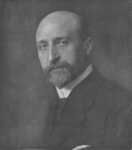Austrian Constitutional Assembly election, 1919
|
|
|||||||||||||||||||||||||||||
|---|---|---|---|---|---|---|---|---|---|---|---|---|---|---|---|---|---|---|---|---|---|---|---|---|---|---|---|---|---|
|
|||||||||||||||||||||||||||||
|
All 170 seats in the Constitutional Assembly 86 seats needed for a majority |
|||||||||||||||||||||||||||||
| Turnout | 2,998,297 (84.4%) | ||||||||||||||||||||||||||||
|
|||||||||||||||||||||||||||||
|
|||||||||||||||||||||||||||||
Constitutional Assembly elections were held in Austria on 16 February 1919. The result was a victory for the Social Democratic Workers' Party, which won 72 of the 170 seats. The party was largely supported by the working class, whilst farmers and the middle class voted mainly for the anti-Anschluss Christian Social Party. Voter turnout was 84.4%. It is generally reckoned as the first free election ever held in Austria.
German citizens living in Austria and Sudeten Germans living in the newly-formed Czechoslovakia were allowed to vote in the elections, despite Czechoslovak objections. Austrian citizens living in Germany were also allowed to vote in the elections for the Weimar National Assembly in the same year.
The two main parties formed a coalition after the elections, and although it had broken up by mid-1920, a new constitution was agreed on 1 October 1920.Fresh elections were held on 17 October.
...
Wikipedia

